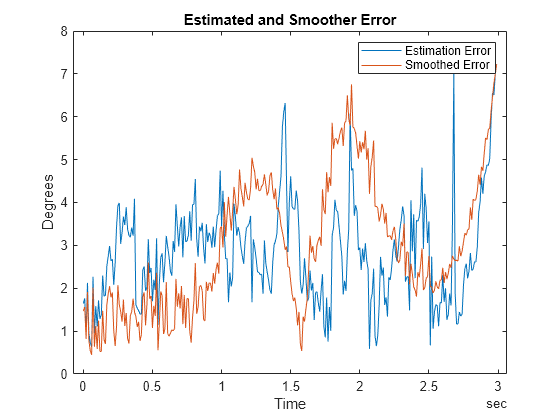estimateStates
Syntax
Description
estimates = estimateStates(filter,sensorData,measurementNoise)sensorData and fuses data from each column of
the table one by one.
[
additionally returns the smoothed state estimates by using the Rauch-Tung-Striebel (RTS)
nonlinear Kalman smoother. For algorithm details, see Algorithms and [1].estimates,smoothEstimates] = estimateStates(___)
Tip
Smoothing usually requires considerably more memory and computation time. Use this syntax only when you need the smoothed estimated states.
Examples
Input Arguments
Output Arguments
Algorithms
References
[1] Crassidis, John L., and John L. Junkins. "Optimal Estimation of Dynamic Systems". 2nd ed, CRC Press, pp. 349- 352, 2012.
Extended Capabilities
Version History
Introduced in R2022aSee Also
predict | fuse | residual | correct | stateparts | statecovparts | stateinfo | tune | createTunerCostTemplate | tunerCostFcnParam


